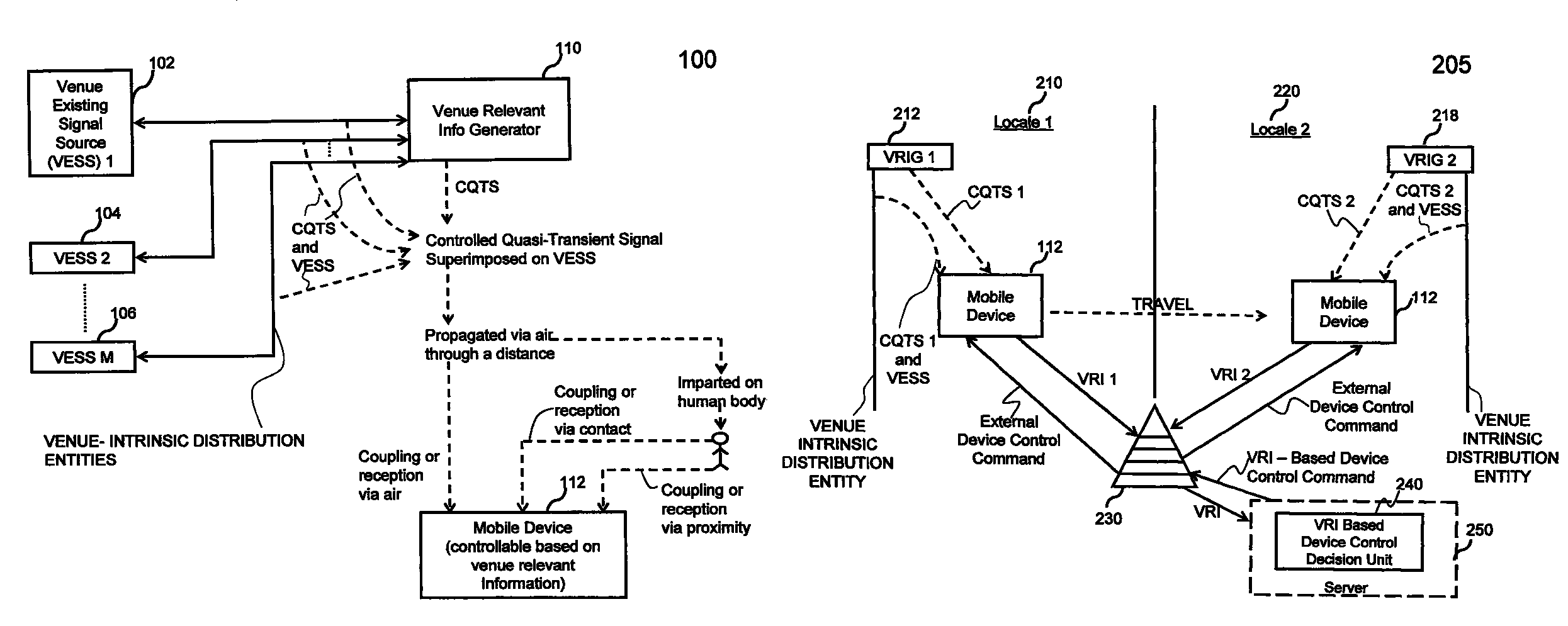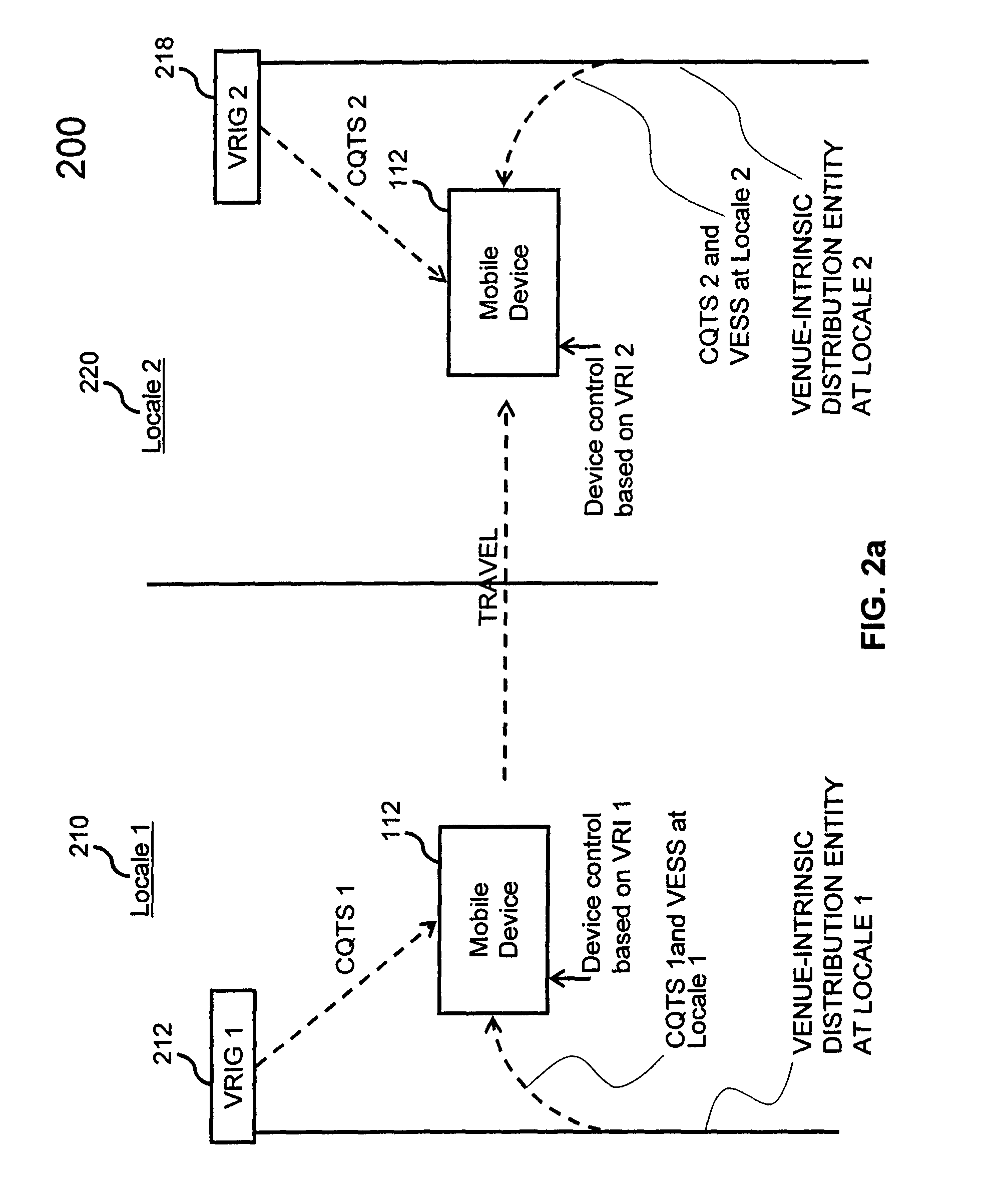Venue-based device control and determination
a technology of location and control, applied in the field of venue-based position and context determination, can solve the problems of not being able to provide the degree of localization of position information necessary for instant control of a device, the level of granularity is often not adequate for emerging applications, and the venue operator has no such control capability over other's personal electronic devices and those used by the telecommunications customers of others, so as to achieve greater family security and greater precision
- Summary
- Abstract
- Description
- Claims
- Application Information
AI Technical Summary
Benefits of technology
Problems solved by technology
Method used
Image
Examples
Embodiment Construction
[0035]FIG. 1 depicts an exemplary framework 100 in which a mobile device 112 is controllable based on venue relevant information (VRI) extracted from controlled quasi-transient signal(s) transmitted or coupled via a low-average-power signal or charge that may be distributed via venue-intrinsic entities and propagated in the air or through a distance, according to an embodiment of the present teaching. The framework 100 comprises one or more venue existing signal sources (VESS) 102, 104, . . . , 106, a venue relevant information generator 110, which generates and codes venue relevant information and then couples the coded venue relevant information to at least one venue-intrinsic entity such as an electrical branch circuit that inherently exhibits electric, magnetic or electromagnetic fields that are the VESSs to which the controlled quasi-transient signals (CQTS) may be referenced, e.g. in time or phase. The CQTS are distributed at the venue generally along the same existing paths w...
PUM
 Login to View More
Login to View More Abstract
Description
Claims
Application Information
 Login to View More
Login to View More - R&D
- Intellectual Property
- Life Sciences
- Materials
- Tech Scout
- Unparalleled Data Quality
- Higher Quality Content
- 60% Fewer Hallucinations
Browse by: Latest US Patents, China's latest patents, Technical Efficacy Thesaurus, Application Domain, Technology Topic, Popular Technical Reports.
© 2025 PatSnap. All rights reserved.Legal|Privacy policy|Modern Slavery Act Transparency Statement|Sitemap|About US| Contact US: help@patsnap.com



